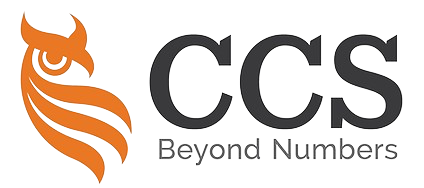1. What is Transfer Pricing?

Transfer pricing is the area of taxation that deals with the pricing of transactions between enterprises under common ownership or control (associated enterprises).
Transactions are for example the sale of goods, the provision of services, the use of intellectual property, or the provision of financial transactions.
The price for such transactions between associated enterprises must be comparable to what independent enterprises would agree upon (arm’s length principle).
2. What are associated enterprises?

Transfer pricing is relevant for transactions between associated enterprises.
In general, enterprises can be associated for two reasons:
- An enterprise participates directly or indirectly in the management, control, or capital of another enterprise; or
- The same person participates directly or indirectly in the management, control, or capital of both enterprises.
3. What is the Arm’s Length Principle?

The arm’s length principle is a fundamental concept in transfer pricing that guides the determination of prices for transactions between related entities within a multinational organisation.
It requires that these transactions be priced as if they were taking place between independent parties in an open market, with no special relationship or influence between them.
It seeks to prevent multinational companies from artificially shifting profits to low-tax jurisdictions or manipulating prices to minimise tax liabilities.
The application of the arm’s length principle requires careful analysis and documentation to support the pricing decisions.
Multinational companies are expected to maintain transfer pricing documentation that demonstrates the analysis performed, the selection of the appropriate transfer pricing method, and the rationale behind the pricing decisions.
4. When does Transfer Pricing become relevant?

Transfer pricing is relevant for each transaction between associated enterprises.
In most countries, substantiation of the arm’s length conditions of these transactions is required by law.
In general, this relates to both domestic and cross-border transactions.
To avoid disputes and ensure compliance, many countries have established transfer pricing regulations aligned with international standards, such as the guidelines provided by the Organization for Economic Co-operation and Development (OECD).
These regulations require multinational companies to use appropriate transfer pricing methods, maintain documentation to support their pricing decisions, and engage in advance pricing agreements or dispute resolution mechanisms when necessary
5. What happens when my Transfer Price is not correct?

In Malaysia, having incorrect transfer pricing can have significant consequences in the context of income tax.
The Malaysian tax authorities, known as the Inland Revenue Board of Malaysia (IRBM), place great emphasis on ensuring that transfer pricing is conducted in accordance with the arm’s length principle and that taxable profits are accurately determined.
Here are the potential consequences of incorrect transfer pricing in Malaysia:
a. Transfer Pricing Adjustments

If the tax authorities identify transfer pricing inconsistencies or consider the pricing to be outside the arm’s length range, they have the authority to make transfer pricing adjustments.
The adjustments involve revising the prices or profits associated with related-party transactions to align them with what would have been agreed upon between unrelated parties.
The IRBM may propose upward adjustments to increase the chargeable income of the Malaysian entity if it is deemed that the prices charged in controlled transactions were lower than what would have been agreed at arm’s length.
This adjustment can lead to higher tax liabilities, including additional taxes and penalties.
b. Penalties and Surcharge on the Transfer Pricing Adjustment

Failing to prepare the transfer pricing documentation will incur a penalty of RM 20,000 to RM 100,000 imposed by the IRBM.
Incorrect transfer pricing can result in penalties and surcharges imposed by the IRBM.
A surcharge of up to 5% will be imposed on all TP adjustments and this will apply irrespective of whether there is tax payable on the adjustment.
c. Increased Tax Audit Scrutiny

Inaccurate transfer pricing may trigger increased scrutiny from tax authorities during tax audits.
The IRBM may select a company for a transfer pricing audit to examine intercompany transactions and ensure compliance with the arm’s length principle.
This can result in additional time and resources spent on providing detailed explanations, supporting documentation, and engaging in discussions with tax officials.
d. Reputational and Legal Risks

Incorrect transfer pricing practices can also expose companies to reputational risks and potential legal challenges.
Public disclosure of transfer pricing disputes or aggressive tax planning can damage a company’s reputation and relationships with stakeholders, including customers, investors, and business partners.
Legal disputes arising from transfer pricing issues can lead to litigation, which can be costly and time-consuming.
e. Double Taxation

If transfer pricing adjustments are made by the Malaysian tax authorities, it can potentially result in double taxation.
This occurs when the same income is subjected to taxation both in Malaysia and in the jurisdiction where the related party is located.
To mitigate double taxation, Malaysia has entered into tax treaties with various countries, which provide mechanisms for the elimination or reduction of double taxation through the mutual agreement procedure.
To avoid these consequences, it is crucial for companies operating in Malaysia to ensure that their transfer pricing practices comply with the arm’s length principle.
This involves conducting thorough transfer pricing analyses, maintaining proper documentation, and seeking professional advice when necessary.
By proactively addressing transfer pricing compliance, companies can minimise the risks associated with incorrect transfer pricing and maintain a positive relationship with the tax authorities.
6.1 What are the OECD Transfer Pricing Guidelines?

The OECD Transfer Pricing Guidelines give a framework for multinational corporations and tax authorities to use to ensure that transfer pricing practices are consistent with the arm’s length principle.
The Organisation for Economic Cooperation and Development (OECD) Guidelines serve as a worldwide recognised reference for transfer pricing legislation and best practices.
The following are some of the essential elements of the OECD Transfer Pricing Guidelines:
1. Scope and Principles
The guidelines provide an in-depth look into transfer pricing concepts, principles, and methodologies.
They stress the need to conduct transfer pricing assessments based on the arm’s length principle, which requires pricing related-party transactions as if they were carried out between independent parties under comparable conditions.
2. Methods of Transfer Pricing
The guidelines describe a number of transfer pricing methodologies for determining arm’s length prices.
The Comparable Uncontrolled Price (CUP) technique, the Cost Plus method, the Resale Price method, Transactional Net Margin (TNMM), and the Profit Split method are among them.
The Guidelines explain each approach in depth, as well as their relevance and the elements to consider when choosing the best way.
3. Comparability Analysis

Conducting a comparability analysis is an important part of transfer pricing.
To establish arm’s length prices, the Guidelines emphasise the need of comparing controlled transactions with analogous uncontrolled transactions.
The characteristics of the transactions, functions performed, contractual terms, economic circumstances, and business strategies are all factors evaluated in the comparability study.
The OECD Transfer Pricing Guidelines serve as a valuable resource for countries around the world in developing their own transfer pricing regulations.
While the guidelines are not legally binding, they are widely followed and influence the interpretation and application of transfer pricing rules in many jurisdictions.
It is important for multinational enterprises and tax authorities to stay updated with the latest version of the OECD Transfer Pricing Guidelines, as they are periodically revised to address emerging transfer pricing challenges and developments in the global economy.
6.2 What are the Malaysian Transfer Pricing Guidelines?

In Malaysia, transfer pricing guidelines are issued by the Inland Revenue Board of Malaysia (IRBM) under the Income Tax Act 1967.
The guidelines provide rules and regulations for determining the pricing of transactions between related parties, such as companies within the same group, to ensure that such transactions are conducted at arm’s length.
These guidelines are based on the OECD Transfer Pricing Guidelines for Multinational Enterprises and Tax Administrations and provide detailed instructions on various aspects of transfer pricing.
Key principles and requirements outlined in the Malaysian Transfer Pricing Guidelines include:
1. Arm’s length principle:
Transactions between related parties should be priced as if they were conducted between independent parties under similar circumstances.
2. Transfer pricing methods:
The guidelines provide several methods for determining arm’s length prices, including the:
- Comparable Uncontrolled Price Method,
- Resale Price Method,
- Cost Plus Method,
- Transactional Net Margin Method, and
- Profit Split Method.
The most appropriate method should be selected based on the facts and circumstances of the transaction.
3. Comparable Data and Adjustments

To determine arm’s length prices, the guidelines emphasize the importance of using reliable and accurate comparable data.
Taxpayers are expected to make appropriate adjustments to account for any differences between the controlled and uncontrolled transactions being compared.
These adjustments may include accounting for functional differences, contractual terms, and economic conditions that affect the pricing.
4. Documentation Requirements

The guidelines mandate that taxpayers maintain proper transfer pricing documentation to support their pricing decisions.
This documentation should include a comprehensive analysis of the controlled transactions, comparability factors, selection of transfer pricing methods, and any other relevant information.
Adequate documentation is crucial to demonstrate compliance with the arm’s length principle and may be requested by the tax authorities during audits.
The Guidelines are applicable on controlled transactions for the acquisition or supply of property or services between associated persons, where at least one person is assessable or chargeable to tax in Malaysia.
To ease compliance burden persons referred to do not include individuals not carrying on a business, further-

- for a person carrying on a business, the Guidelines apply wholly to a business with gross income exceeding RM25 million, and the total amount of related party transactions exceeding RM15 million.
- where a person provides financial assistance, the guidelines on financial assistance are only applicable if that financial assistance exceeds RM50 million. The Guidelines do not apply to transactions involving financial institutions.

Any person who falls outside the scope of the above may opt to fully apply all relevant guidance as well as fulfill all Transfer Pricing Documentation requirements in the Guidelines; or alternatively may opt to comply with Transfer Pricing Documentation requirements under paragraph 11.2.4 (a), (c) and(d) of the Guidelines. In this regard, the person is allowed to apply any method other than the five methods described in the Guidelines provided it results in, or best approximates, arm’s length outcomes.
It’s important for businesses operating in Malaysia to familiarise themselves with the Malaysian Transfer Pricing Guidelines and ensure compliance with the requirements.
Consulting with tax professionals experienced in transfer pricing matters is highly recommended to navigate the complexities of transfer pricing regulations and fulfill the necessary obligations.
7. How do you determine a transfer price?

Transfer pricing is not an exact science, so there is no one way to figure out a transfer price that works for everyone.
Transfer pricing is based on comparing transactions between independent enterprises that took place under similar conditions.
In real life, it can be hard to make this comparison work.
A typical process for determining a transfer price can be summarised as follows:
- Analysis of taxpayer’s circumstance on a broad-based basis;
- Check out available intercompany agreements;
- Understanding the intercompany transactions based on an analysis of the functions performed, risks assumed and assets used (functional analysis);
- Review of internal or external comparables, (if any are available);
- Selection of the transfer pricing method;
- Identification of possible comparables;
- Determination of comparability adjustments (if needed); and
- Interpretation of data to determine the arm’s-length transfer price.
8. How important are intercompany agreements?

Intercompany agreements are the starting point of the transfer pricing analysis.
Intercompany agreements might however not always cover all the relevant aspects for a transfer pricing analysis.
Intercompany agreements play a crucial role in transfer pricing as they serve as legal contracts that document the terms and conditions of transactions between related entities within a multinational organisation.
These agreements are vital for establishing and supporting the arm’s length nature of the transactions.
Here are the key reasons why intercompany agreements are important in transfer pricing:
1. Legal Basis for Transactions
Intercompany agreements provide a legal framework for intercompany transactions.
They define the rights, obligations, and responsibilities of the related entities involved in the transaction.
These agreements help ensure that transactions are conducted in a manner consistent with commercial realities and legal requirements.
2. Evidence of the Transaction

Intercompany agreements serve as tangible evidence of the existence and terms of the transaction.
They provide documentation that demonstrates the economic substance of the transaction and supports the pricing decisions.
This documentation is crucial in defending the arm’s length nature of the transaction during tax audits or disputes with tax authorities.
3. Alignment with Business Strategies

Intercompany agreements help align transfer pricing practices with the overall business strategies of the multinational organisation.
These agreements reflect the intentions and objectives of the parties involved and outline the commercial rationale for the transactions.
This alignment ensures that transfer pricing decisions are consistent with the business operations and goals of the related entities.
4. Compliance with Transfer Pricing Regulations

Intercompany agreements contribute to compliance with transfer pricing regulations.
They demonstrate that the related entities are operating at arm’s length and conducting transactions in accordance with the arm’s length principle.
By clearly documenting the terms and conditions of the transactions, intercompany agreements provide the necessary support for transfer pricing compliance.
5. Risk Management
Intercompany agreements play a crucial role in managing transfer pricing risks.
They help mitigate the risk of transfer pricing disputes by providing a clear framework for the transactions and pricing decisions.
Well-drafted agreements can address potential transfer pricing issues and outline the methodologies and factors considered in determining the transfer prices.
This proactive risk management approach enhances transparency and reduces the likelihood of disputes with tax authorities.
6. Consistency and Internal Controls

Intercompany agreements contribute to maintaining consistency and internal controls within the multinational organisation.
These agreements help ensure that transactions between related entities are conducted in a standardised manner, consistent with the transfer pricing policies and guidelines of the organisation.
They provide a mechanism for monitoring and controlling intercompany transactions, ensuring compliance with internal guidelines and protocols.
7. Facilitation of Business Operations

Intercompany agreements facilitate smooth business operations within a multinational organisation.
By clearly defining the terms and conditions of the transactions, these agreements enable efficient and effective management of the supply chain, intellectual property rights, financing arrangements, and other intercompany activities.
They provide a basis for the proper allocation of profits and costs among related entities.
It is important for multinational organisations to establish and maintain well-drafted intercompany agreements that accurately reflect the terms of their intercompany transactions.
These agreements should be consistent with the arm’s length principle and supported by proper documentation.
By doing so, companies can enhance transfer pricing compliance, reduce risks, and ensure transparency and consistency in their intercompany dealings.

9. What is a Functional Analysis?
Functional analysis is a critical component of transfer pricing that involves examining and understanding the functions, assets, and risks (referred to as FAR) associated with a specific transaction or a business operation within a multinational organisation.
It provides insights into how value is created and allocated among related entities. Here are the key aspects of a functional analysis:

Functions performed
By analysing the functions performed it is important to obtain an understanding of how value is created by the group as a whole, the interdependencies of the functions performed by the associated enterprises with the rest of the group, and the contribution that the associated enterprises make to that value creation.
Assets used
In functional analysis, attention should also be paid to the type of assets used by the associated enterprises.
These assets can either be tangible, intangible, or financial.
Such analysis includes a consideration of the nature of the assets used, such as market value, location, or protection rights available.
Risks assumed

An important aspect of the functional analysis is the identification of material risks assumed by each enterprise in the transaction as the actual assumption of risk affects the price and other conditions of the transaction.
The determination of which associated enterprise bears a particular risk requires careful analysis.
The identification of the risks assumed can be a challenge.
10. What are transfer pricing methods?

Transfer pricing methods are established frameworks used to determine the arm’s length prices for transactions between related entities within a multinational organisation.
These methods provide a systematic approach to compare and evaluate controlled transactions with comparable uncontrolled transactions.
Here are some commonly used transfer pricing methods:
1. Comparable Uncontrolled Price (CUP) Method
The CUP method compares the price of the controlled transaction with the price of a comparable transaction between unrelated parties.
It requires a high level of similarity and comparability between controlled and uncontrolled transactions, particularly in terms of the product or service being transferred.
2. Cost Plus Method
The Cost Plus method starts with the costs incurred by the selling entity and adds an appropriate markup to determine the transfer price.
The markup is typically a predetermined percentage that represents a reasonable profit margin. This method ensures that the selling entity is adequately compensated for its costs and earns a reasonable profit.
3. Resale Price Method

The Resale Price method involves determining the transfer price based on the resale price of the product or service.
The resale price is the price at which the buyer resells the product to an unrelated customer, minus an appropriate gross margin.
This method is commonly used when the buyer’s value-added activities are minimal.
4. Transactional Net Margin Method (TNMM)
The TNMM compares the net profit margin earned in a controlled transaction to the net profit margin earned in comparable uncontrolled transactions.
It focuses on the profitability of the transaction, considering factors such as functions performed, assets used, and risks assumed.
The TNMM is widely used when reliable comparable data is available.
5. Profit Split Method
The Profit Split method divides the combined profits of related entities based on their relative contributions to the value creation process.
This method considers the functions performed, assets used, and risks assumed by each entity. It is commonly used in situations where both entities make significant contributions to the creation of value.
6. Other Methods
In addition to the methods mentioned above, some jurisdictions may recognise or provide guidance on other transfer pricing methods.

The selection of the method depends on the availability and reliability of comparable data and the nature of the transaction.
It’s important to note that the selection of the most appropriate transfer pricing method depends on several factors, including the nature of the transaction, the availability of comparable data, and the level of comparability between the controlled and uncontrolled transactions.
The chosen method should best align with the arm’s length principle and provide the most reliable and accurate transfer pricing results.
11. What is a comparability analysis?

A comparability analysis is a comparison of a transaction between associated enterprises with a transaction or transactions between independent enterprises.
These transactions are comparable if there are no differences between the two transactions that could materially affect the pricing.
If adjustments can be made to eliminate these material differences, the transaction may also be considered comparable.
12. What is a Transfer Pricing Audit?

In Malaysia, a transfer pricing audit refers to an examination conducted by the tax authorities to assess the transfer pricing practices of multinational enterprises (MNEs).
Transfer pricing involves the pricing of transactions between related entities, such as subsidiaries, branches, or affiliates, which are located in different tax jurisdictions.
The primary objective of a transfer pricing audit is to ensure that transactions between related parties are conducted at arm’s length prices, which means prices that would be agreed upon between unrelated entities in a similar transaction under similar circumstances.
The Inland Revenue Board of Malaysia (IRBM) conducts transfer pricing audits to ensure that companies are not manipulating prices to shift profits to low-tax jurisdictions or evade taxes.

During a transfer pricing audit, the tax authorities examine the documentation and evidence related to intercompany transactions, such as sales, purchases, loans, royalties, or services.
They analyze the pricing methodology used by the company and compare it with industry benchmarks and comparable transactions to determine if the prices are at arm’s length.
The audit may also include a review of the company’s transfer pricing policies, contracts, financial records, and other relevant documents.
If the tax authorities find that the transfer prices are not at arm’s length, they may make transfer pricing adjustments by reallocating profits or expenses between related parties.
These adjustments can have tax implications, resulting in additional tax liabilities, penalties, and interest charges for the company. In some cases, the tax authorities may also impose penalties for non-compliance or initiate legal proceedings.

To mitigate the risk of transfer pricing disputes and potential audits, companies operating in Malaysia are encouraged to maintain proper transfer pricing documentation that supports the arm’s length nature of their intercompany transactions.
This documentation should include a detailed analysis of the company’s transfer pricing policies, functional and risk analysis, benchmarking studies, and any other relevant information.
It is important for companies to comply with transfer pricing regulations in Malaysia to avoid potential disputes and penalties.
Seeking professional advice from tax experts and conducting regular transfer pricing reviews can help ensure compliance and minimize the risk of transfer pricing audit assessments.
Feel free to ask for a quotation.

Disclaimer:
The articles, templates, and other materials on our website are provided only for your reference.
While we strive to ensure that the information presented is current and accurate, we cannot guarantee the completeness, reliability, suitability, or availability of the website or its content, including any related graphics. Consequently, any reliance on this information is entirely at your own risk.
If you intend to use the content of our videos and publications as a reference, we recommend that you take the following steps:
- Verify that the information provided is current, accurate, and complete.
- Seek additional professional opinions, as the scope and extent of each issue, may be unique.
免责声明:
我们网站上的文章、模板和其他材料只供参考。
虽然我们努力确保所提供的信息是最新和准确的,但我们不能保证网站或其内容,包括任何相关图形的完整性、可靠性、适用性或可用性。因此,您需要承担使用这些信息所带来的风险。
如果你打算使用我们的视频和出版物的内容作为参考,我们建议你采取以下步骤:
- 核实所提供的信息是最新的、准确的和完整的。
- 寻求额外的专业意见,因为每个问题的范围和程度,可能是独特的。
Keep in touch with us so that you can receive timely updates
请与我们保持联系,以获得即时更新。
1. Website ✍️ https://www.ccs-co.com/ 2. Telegram ✍️ http://bit.ly/YourAuditor 3. Facebook ✍
- https://www.facebook.com/YourHRAdvisory/?ref=pages_you_manage
- https://www.facebook.com/YourAuditor/?ref=pages_you_manage
4. Blog ✍ https://lnkd.in/e-Pu8_G 5. Google ✍ https://lnkd.in/ehZE6mxy
6. LinkedIn ✍ https://www.linkedin.com/company/74734209/admin/






